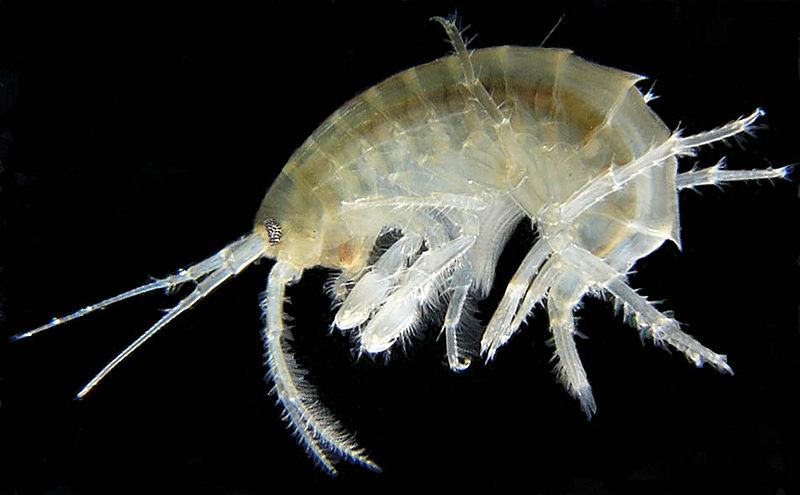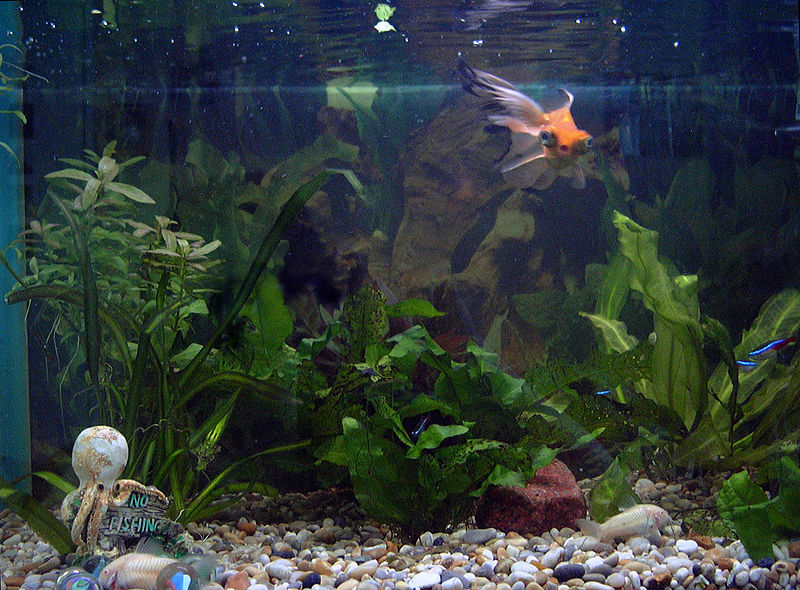 It’s that time of year again…time to slip on the rubber boots or waders to clean out the muck accumulated in the bottom of your pond. Though it’s always nice to see our finned friends coming back to the surface to see us after a long Winter, there are also many things we can encounter in the pond that most of us would rather be left unseen. I’m talking about the nasty, writhing, wiggling creatures that take refuge in the muck and dormant filtration. While there are thousands of microscopic creatures in a pond that you will probably never have the opportunity to see, it’s the worms and larvae that you can see with the naked eye that can cause panic or alarm if you don’t know what you’re looking at. I’d like to take this opportunity to talk to you about a few of the common critters you may find in your pond to hopefully save you some worries in the coming weeks. Read More »
It’s that time of year again…time to slip on the rubber boots or waders to clean out the muck accumulated in the bottom of your pond. Though it’s always nice to see our finned friends coming back to the surface to see us after a long Winter, there are also many things we can encounter in the pond that most of us would rather be left unseen. I’m talking about the nasty, writhing, wiggling creatures that take refuge in the muck and dormant filtration. While there are thousands of microscopic creatures in a pond that you will probably never have the opportunity to see, it’s the worms and larvae that you can see with the naked eye that can cause panic or alarm if you don’t know what you’re looking at. I’d like to take this opportunity to talk to you about a few of the common critters you may find in your pond to hopefully save you some worries in the coming weeks. Read More »
How to Upgrade Your Aquarium
I recently blogged on some tips and techniques for moving an aquarium, but what if you just want a larger tank? This was a question asked after that blog was posted. Some people start with a small tank for “simplicity” and get hooked enough to want to expand. Others want to switch the type of livestock they are keeping or have fish that have outgrown their existing tank. No matter your reason, many of the considerations and techniques that go into moving an aquarium apply to upgrading as well.
The “easiest” upgrade scenario would obviously be one in which the new tank is being set up in any location OTHER than where the existing tank already stands and has all new “stuff” in it (meaning substrate, rockwork, decoration, filter, etc.); you can be a bit more leisurely with this switch. On the other end of the upgrade-spectrum, you may be putting the new tank in the same place as the old one with some of the same substrate, decorations and equipment and will need to be more expedient with the transfer. Read More »
Natural Nitrate and Phosphate Control in Marine Aquariums – Part 2 – Biopellets
 In Part 1 of this article, I talked about Carbon Dosing, and the principals and some of the products on the market that are being used in this method of natural nitrate and phosphate control. You can read the first article for all the details, but for a quick review of what carbon dosing is all about, here are the basics.
In Part 1 of this article, I talked about Carbon Dosing, and the principals and some of the products on the market that are being used in this method of natural nitrate and phosphate control. You can read the first article for all the details, but for a quick review of what carbon dosing is all about, here are the basics.
By providing (dosing) a usable carbon source, the aquarist can increase the uptake of Nitrate and Phosphate by bacteria in the aquarium, and reduce the overall level of Nitrate and Phosphate in the aquarium to desired levels. Maintaining this low nutrient system, improves the overall health of the system, eliminates nuisance algae, and promotes brilliant coloration in corals. Another benefit to this increased bacteria population, also referred to as bacterioplankton, is that it serves as a supplemental food source for corals and filter feeding invertebrates. Carbon sources that are used for dosing have traditionally been vodka, vinegar, sugar or commercially available products like Brightwell Aquatics Reef Bio Fuel, or Red Sea’s NO4-Px. While effective, these sources of carbon must be added on regular basis (every day in most cases) and dosage levels are achieved largely on a trial and error basis. Read More »
Setting Up a Shell-dweller Tanganyikan Cichlid Aquarium
 I think that Cichlids can be an extremely fun fish to watch. They interact with each other and other fish in interesting ways and they have their own set of habits that can be really entertaining from building shelters to courting and breeding. I live on a budget, fresh out of college, so to set up a cheap cichlid tank, I decided to do a single species that stays small so I can use a smaller tank and less expensive equipment. Cichlids usually need a larger tank to accomodate their size and territoriality. I really wanted to try African Cichlids of some type, even though most of the South American dwarves are more colorful. Most African Cichlids grow to at least 4-6 inches, but I did find one group of cichlids, the Shell-dwellers from Lake Tanganyika, that would be just the right fit for my set-up. Many of these cichlids stay under 2 inches even as adults, so the 15 gallon tank that I have will provide plenty of space for several. They use the empty shells of aquatic snails as sites for breeding and shelter, and this behavior alone is very interesting to watch. Read More »
I think that Cichlids can be an extremely fun fish to watch. They interact with each other and other fish in interesting ways and they have their own set of habits that can be really entertaining from building shelters to courting and breeding. I live on a budget, fresh out of college, so to set up a cheap cichlid tank, I decided to do a single species that stays small so I can use a smaller tank and less expensive equipment. Cichlids usually need a larger tank to accomodate their size and territoriality. I really wanted to try African Cichlids of some type, even though most of the South American dwarves are more colorful. Most African Cichlids grow to at least 4-6 inches, but I did find one group of cichlids, the Shell-dwellers from Lake Tanganyika, that would be just the right fit for my set-up. Many of these cichlids stay under 2 inches even as adults, so the 15 gallon tank that I have will provide plenty of space for several. They use the empty shells of aquatic snails as sites for breeding and shelter, and this behavior alone is very interesting to watch. Read More »
How to Move Your Aquarium
 One of the most common questions we receive is about moving an aquarium, whether it is across the room or across the country. Larger tanks and larger fish are certainly more difficult than smaller ones and the larger the distance you are traveling, the more involved the process becomes (although I have used some of these methods when moving my saltwater tank from one room to another when the room it was in was being re-carpeted). For long distances, try checking with your local fish store. Some may be able to help you arrange to have your livestock packed up and shipped via Fedex Overnight or another service. If you are doing the move on your own, there are several tricks and techniques you can use to make things easier on you and your livestock. Read More »
One of the most common questions we receive is about moving an aquarium, whether it is across the room or across the country. Larger tanks and larger fish are certainly more difficult than smaller ones and the larger the distance you are traveling, the more involved the process becomes (although I have used some of these methods when moving my saltwater tank from one room to another when the room it was in was being re-carpeted). For long distances, try checking with your local fish store. Some may be able to help you arrange to have your livestock packed up and shipped via Fedex Overnight or another service. If you are doing the move on your own, there are several tricks and techniques you can use to make things easier on you and your livestock. Read More »
 That Fish Blog – Aquarium Advice and Information
That Fish Blog – Aquarium Advice and Information
